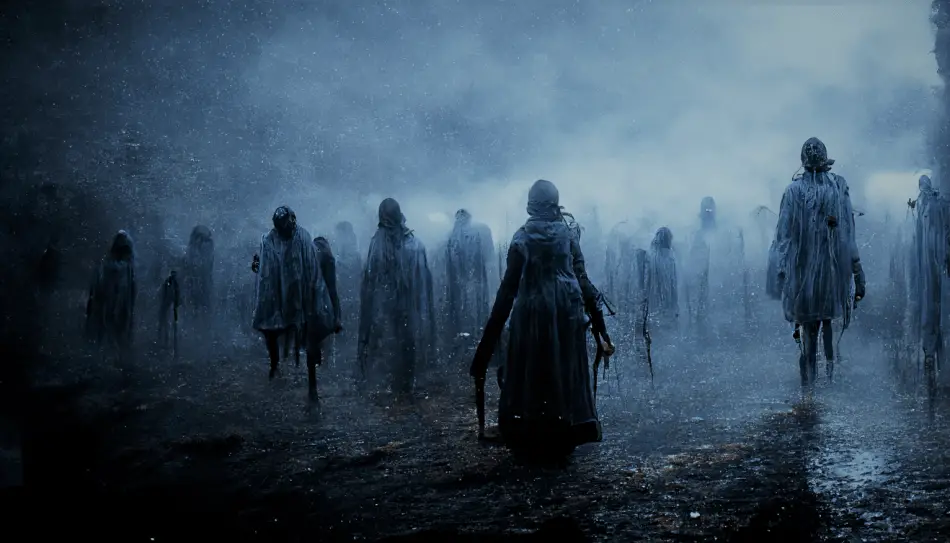Share the Lore!
By: Alex Postrado
The Zombie Gait: The Differences Between Slow And Fast Zombies
From the grave, they have risen to take over the world of the living in works across the horror fiction genre.
Everything, from literary masterpieces to movies, tv shows, and video games, zombies have claimed their rightful place of terror. And they seem to show virtually “no signs of slowing down” because, with time, their popularity in the media and pop culture only grows all the more unparalleled.
But, as iconic as they are, what exactly do we know about zombies?
Looking back, we may remember their claim to fame through George A. Romero’s 1968 hit film Night of the Living Dead, where they were introduced as the slow-moving, corpse monsters with a voracious appetite for flesh.
Contrastingly, in more recent times, they have infiltrated the big screen as hordes of tireless sprinting predators 一 like what we see in movies like The Girl With All The Gifts, Train to Busan, and World War Z.
So, while there is a general consensus that zombies are these mindless, flesh or brain-eating reanimated dead, it is still contested over whether they hunt their prey by lumbering toward their victims 一 the way slow zombies do 一 or running after them 一 as fast zombies would.
But, whichever it is that they do, the question remains: why do they do so?
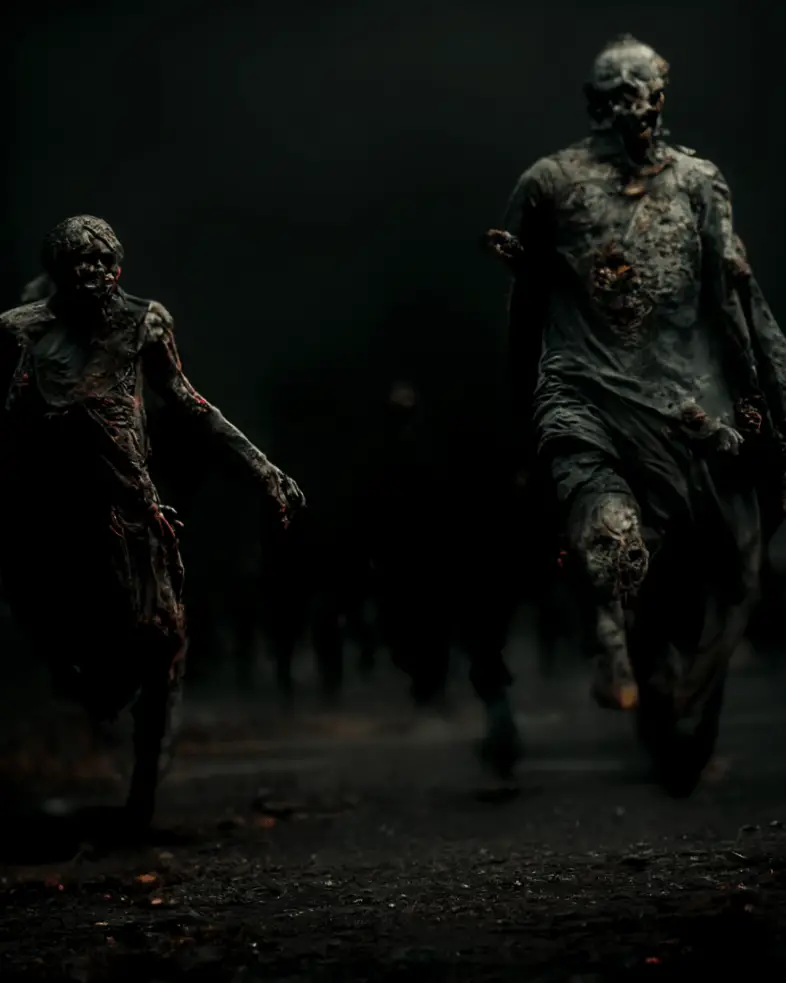
The Two Types of Zombies
Zombies have been a horror staple for decades now. And through the years, we have witnessed how their lore can be rewritten in tons of different ways to flesh out new undead narratives.
We were introduced to zombies brought to “life“ by viruses or alienesque diseases no one on earth has yet to gain an understanding of.
There were also those who were reanimated by means of chemical experiments.
We even know flesh-eating corpses summoned into existence by witchcraft, spirits, and other supernatural forces.
But, even as zombies continuously become this monster of variety, there are still two distinct classifications every zombie species falls accordingly into.
The first is the classic, slow-walking zombies, which are easily identifiable by their shuffling steps and uncoordinated body movements.
This type of zombie is also known as Romero zombies 一 named after the genius behind the Night of the Living Dead franchise.
And the second is the fast zombies.
Otherwise known as runners, this type of zombie only caught on in the early 2000s when it was first featured in Danny Boyle’s 28 Days Later.
But, since then, several other pop culture depictions have included superhuman strength as an ability possessed by fast zombies, apart from their seemingly inexhaustible agility.
Slow Zombies Vs. Fast Zombies
If there are defining details everyone knows about zombies, they are that:
- They are reanimated human corpses;
- They hunger for the flesh or brains of the living;
- They may react to outside stimuli, but they have no consciousness;
- Thus they most often have no free will;
- They cannot communicate, rather they make groaning sounds;
- They stand unfazed by normally fatal attacks;
- Although they can always be stopped and “killed“ by a blow to the brain;
- But those who would try to do so must be careful because their bite is contagious and would turn any victim into a zombie in a matter of hours;
- And finally, they are “extremely persistent“ 一 that is to say, they never stop pursuing their victims because, unlike humans, they do not have the need for rest or sleep.
Above everything, it is, perhaps, this last bit that makes zombies extra threatening.
In films, books, and tv shows, it is this exact factor that makes the living dead a force to be reckoned with.
Because with such unnatural endurance, the odds of completely outrunning zombies prove to be nearly impossible. The only variable is whether they would close in on their victims slow or at full speed.
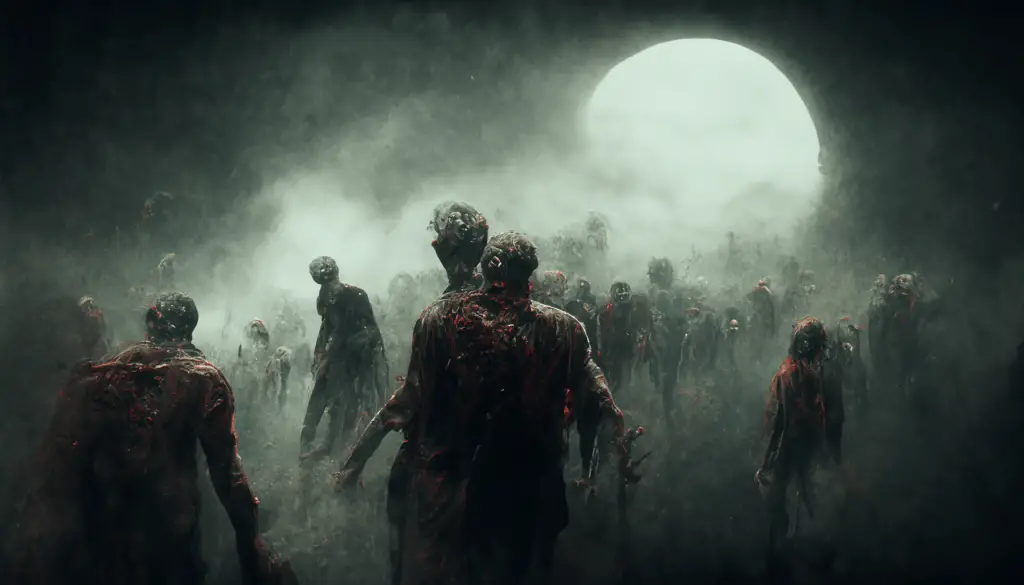
Slow Zombies
The thing about being chased by slow-moving zombies is that they obviously take time 一 and with that time, you can either make your escape or secure your camp.
Moreover, for apparent reasons, it is also easier to get away from them when they only come in pairs or solo.
But do not let their plodding speed and heavy-footed steps fool you!
A small pack of slow zombies can quickly become an “inescapable horde” of the undead if you are not wary enough. And that would mean disaster, because in a large group as such, these zombies “can overwhelm almost any force” or blockage they face.
While it may be facile to navigate the trail when outrunning slow zombies, it is also this detail that earns them the spot of arguably being the scarier of the two types of reanimated flesh-eaters.
Aside from the “false sense of security” that their unhurried pace gives us, on the horror aspect of things, they operate in a more unsettling, ominous light.
Perhaps, nothing is creepier than the bleak realization that, even with such speed, slow zombies would still ultimately get to us. That it is more likely for us to exhaust the areas and spaces we can run off to than it is for them to get tired of getting on their slow, shambling pursuit of our brains and flesh.
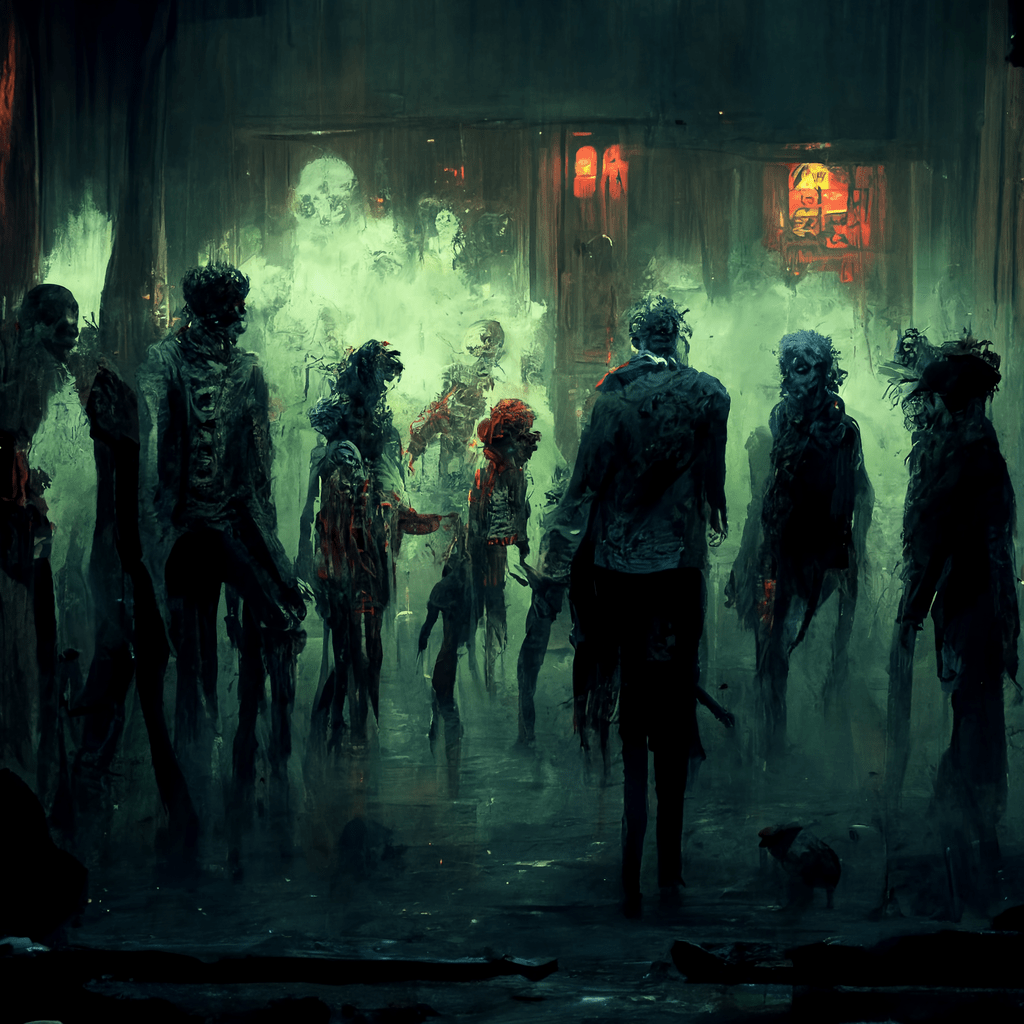
Fast Zombies
On the other hand, fast zombies are arguably deadlier.
There is no slow-burn effect when it comes to pursuits involving them 一 rather desperate, adrenaline-filled attempts of escape from their somewhat feral attacks.
We must admit, anything that can run fast is already kind of spooky. But, especially so, when they are ravenous packs of corpse monsters that have an unwavering craving for human flesh.
In chasing situations with fast zombies, there is no doubt “sheer flight instincts would take over” anyone.
However, with that, comes a clouded sense of judgment that makes formulating a viable escape strategy 一 which takes into account both the number of the adversaries at bay and the familiarity of the territory 一 almost out of the question.
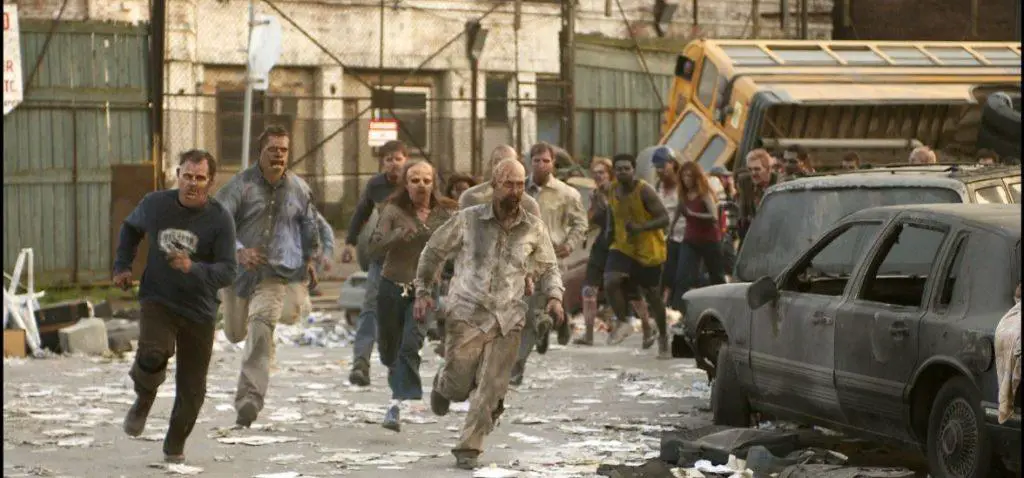
Why Zombies Walk Slow (And Why Some Are Fast)
The reasons why zombies are written and portrayed as both of these kinds 一 slow and fast 一 are actually fairly straightforward.
The seemingly reluctant gait of slow, Romero-type zombies was specifically handpicked to do two things:
To highlight the sense of death in the depiction of the flesh-eaters, in such a way that their physical form is “no longer fully functional“, and therefore, “basic locomotion is a chore“;
And to achieve the effect that the brain behind the idea 一 in this case, George A. Romero 一 wanted: the intensified element of suspense.
Case in point, what else could top that spike of terror and sense of helplessness every time we watch a slow zombie close in on its victim in movies?
As for fast zombies, however, the reason for their unmatched speed is to pare down the feeling of dread due to the wait and exchange it for the absolute horror of knowing that one wrong 一 otherwise a-little-too-late 一 move could mean death at the hands of a predatory reanimated corpse.
Death or, if not, contagion 一 the risk of becoming one of the undead.
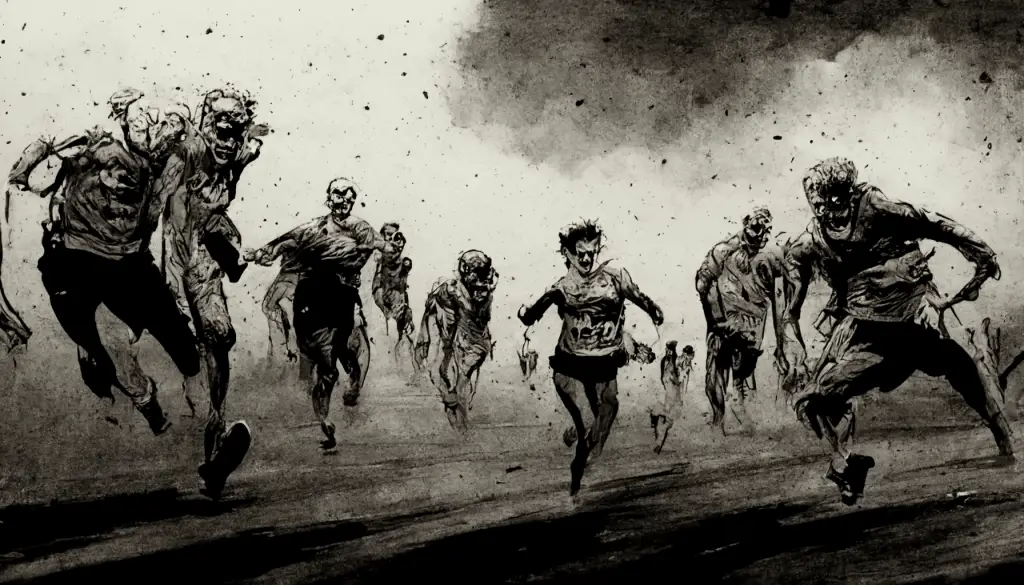
Would Real Zombies Be Fast or Slow?
The general consensus among the masses is that zombies are most likely purely fictional beings.
Most claim that the idea of the living dead is not scientifically accurate.
But, for the sake of the argument, the answer as to which of the two main types of zombies is more realistic would more hypothetically lean to slow zombies.
As the co-writer and lead star of the 2004 zombie flick, Shaun of the Dead, Simon Pegg, explains in one interview, “Death is a disability, not a superpower.”
Therefore, if it is already difficult for us to move while suffering any sort of disease, how much harder would it be if the thing we are afflicted with happens to be “the most debilitating malady of them all” 一 death?
Furthermore, the answer can also simply be found in the very nature of the monster itself.
We know that zombies are human corpses, awakened back into life directly from their graves.
They most possibly had no human flesh, nor brain, to consume in there!
And any being that had no nourishment of any kind for such a long time, scientifically speaking, would have trouble moving 一 if that is not too far-fetched of an idea to even begin with.
References:
Why Slow Zombies Slay Their Fast Counterparts Slow Zombies Vs. Fast Zombies: How Have They Influenced The Genre? Undead On Arrival: Should Zombies Run Or Lurch? 5 Reasons Slow Zombies Are Scarier Than Fast Zombies (& Vice Versa) Undead Reckoning: The History Of Fast Zombies
